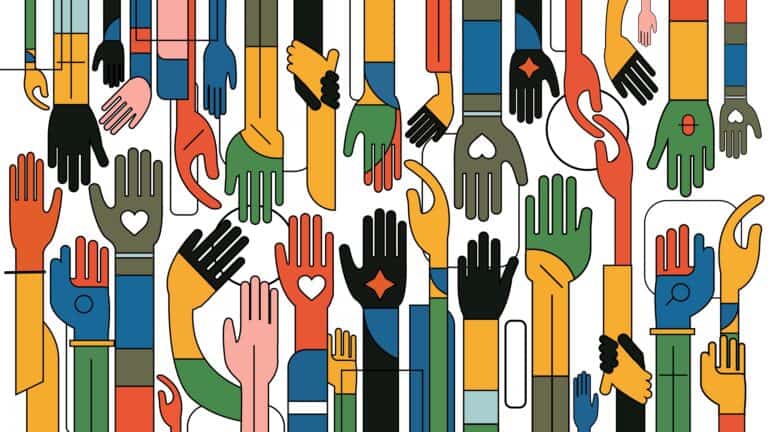There are about 2,500 terms that comprise the terminology of entry-level massage therapy. Learning the language of massage therapy is just like learning French, Spanish, Italian, Russian, Chinese, or Arabic. In massage education, you must master a new language and you must master that language in a year!
This video presentation and these presentation notes aim to offer massage students an effective approach to learning massage terminology so they are ready to pass the MBLEx on the first try.

presentation notes
Introduction
An estimated 500 unique terms show up on one Massage and Bodywork Licensing Exam (MBLEx). The MBLEx is the national exam most massage school graduates must pass to obtain their massage credentials. Probably 500 words sounds better than 2,500 words, but which 500 from the 2,500 is the question. You’ll want to have a working understanding of all 2,500 terms when you sit for the MBLEx.
Levels of Terminology Knowledge
Education researchers have identified four levels of terminology understanding:
- Level 1: At level 1, we can match a term to its written definition. We know the term when we see it.
- Level 2: At level 2, we can tell you 2 things about a term when we see it.
- Level 3: At level 3, we can give an accurate definition of a term in our own words.
- Level 4: At level 4, we can give an accurate and detailed definition of the term and use the term to explain other terms.
Teachers typically have a level 4 knowledge of the terms they use during classes. As students we will need to know most terms at level 2 to pass our massage school classes. To be completely ready to pass the MBLEx, we should aim to know as many words as possible at level 3. That means we can give a basic definition of the term in our own words.

WORDS AND PICTURES: Researchers tell us that images are processed in the brain about 60,000 times faster than text. This ability to recognize objects helped ancient humans survive and helps modern humans learn.
Words and Pictures
Researchers tell us that images are processed in the brain about 60,000 times faster than text. This ability to recognize objects helped ancient humans survive and helps modern humans learn. we want to pair an image with a term whenever possible. When we do, we’ll more readily remember something about the term and its meaning.
Learn Terms Using Effective Methods
Let’s begin by setting some daily terminology goals. Ideally, we’ll want to learn 8 new terms to level 2 each day and we’ll want to review 16 previously learned terms each day. The more able we are to define terms in our own words, the better.
For context, researchers found that average learners can memorize the meaning of 8 terms in an hour and up to 22 terms in a day. So, learning 8 new terms in a day is manageable, even if you struggle with word learning and recall.
Let’s start with new words. We want to Identify the 8 new terms we intend to learn and make a list of these terms. Let’s imagine we’re working on the integumentary system (the skin and its accessory organs). We might strive to learn these 8 terms:
- Epidermis
- Dermis
- Accessory organs
- Strata
- Hypodermis
- Cutaneous membrane
- Collagen
- Elastin
For each term we are going to follow this specific process:
- Say It! We’ll pronounce the term correctly ten times or more.
- Picture It! We’ll look at pictures related to the term and visualize these pictures in our mind’s eye.
- Dissect It! We’ll break the term down into what it is and what it does to better understand its meaning.
- Flash It! We’ll make flash cards. Yep! We’ll make good old-fashioned flash cards.
- Drill It! We’ll drill the information about the term to memorize two things about the term.
Let’s take a closer look at each of these processes.
Say It!
If you can’t pronounce a term, you will never be able to remember it and you won’t be able to use it when you discuss massage topics with instructors and peers. So, learn how to say each term correctly and practice saying it aloud numerous times.
Some of the textbooks at Massage Mastery Online have a listen-along audio strip that comes with terminology flip cards. You click on the strip and then read along with the audio, as you flip the cards. This is a great way to improve your reading comprehension and learn terminology pronunciation.
If this feature is not available for a term you’re learning, simply type the term and the word, “pronunciation” into a web browser and numerous options for pronunciation appear. When we arrive at the pronunciation for epidermis, click the sound icon and practice looking at the word and saying it aloud until pronunciation is automatic.

PICTURE IT! Notice that pictures help us clarify the meaning of the term. From this image we can easily see that the epidermis is the outermost layer of the skin.
Picture It!
Now, we want to connect the term to a picture whenever possible. From our earlier discussion, you’ll remember that pictures are easier for your mind to remember than text. If a textbook presents you with an image, look at it and read the caption. Notice that pictures help us clarify the meaning of the term. From this image we can easily see that the epidermis is the outermost layer of the skin.
If you’re studying a term and your textbook doesn’t show an image, search for images on the Internet. See the options you get when you type in the term “epidermis” and click on the images tab in Chrome or another browser.
Practice visualizing the image. Look at the image, look away from the image and visualize the image in your mind. Do this visualization exercise two or three times while you say the term aloud.
Dissect It!
This is the formal definition of the epidermis:
The epidermis is the outermost layer of the cutaneous membrane composed of four or five strata that functions to provide water resistance, protection, skin tone, color, immune protection, and sensory reception.
You’ll notice that this term is composed of 8 other terms (bold text). If you have no idea what these 8 other terms mean, then it will be difficult to remember anything about the epidermis.
You might already realize that, “cutaneous membrane,” and “strata” are two of the 8 words on your list to learn today. So, you’re getting a jump on these terms when you break down the meaning of the epidermis and look them up.
You might also realize that some of these terms relate to the functions of the epidermis. For now, it is enough to understand that these are functions. As your knowledge of the epidermis grows, you’ll be able to briefly describe each of these functions.
Let’s talk about concepts. A concept is an idea of what something is and how it works. Always break the terms you’re leaning into these two areas – what it is and how it works. When we say, how something works, we mean how it functions, it’s purpose, or its role. In other words, what it does.
So, if we break the term, epidermis, into what it is and what it does it looks like this.
- What it is: The outermost layer of the cutaneous membrane (which we have looked up and know means skin), composed of four or five strata (which we’ve looked up and know means layers).
- What it does: It provides water resistance, protection, skin tone, color, immune protection, and sensory reception.
Flash It!
Even with the tools in your digital and printed textbooks, nothing is more effective than hand-made flash cards for learning terminology. Get packs of index cards. On the front of a card, write the term. On the back of the card write the definition. It can be a great idea to color code the definition. For example, I might write what the epidermis is in blue and its functions in purple. Just the process of writing the term and its definition significantly improves your ability to memorize the term.
Drill It!
Drill your knowledge by reading the term, “epidermis” aloud, visualizing the image of the epidermis in your mind, and read the definition aloud 5 times. When you actually form the words with your mouth, you use a different area of your brain, and so deepen your learning experience.
Then, view the term, “epidermis,” on your flash card. See if you can say two things about the epidermis without looking at the back of your card. You might say, this is the outermost layer of the skin, and it resists water, for example. Practice looking away from the back of your card and stating two things about the epidermis until these words come easily to you.
Nice work. You have effectively studied the term, epidermis. I know it seems like a lot to do for one term, but it actually goes pretty fast and your efforts will save you time later when you study for a quiz and already have a strong working knowledge of the terminology related to a particular topic.
Now, Wash, Rinse, Repeat! Go back and repeat the process with the second word in your vocabulary list, then the third, then the forth, and so on.
Spaced Practice
Next, let’s use spaced practice to reinforce and deepen what we just learned. Space practice is a method of study advocated by learning experts. In spaced practice, you drill previously learned content, then go and do something else. You come back and drill the content, then go and do something else. You come back and drill the content, then go and do something else, and so forth.
With spaced practice you’re teaching your mind to travel to the place where the information related to the term is stored in memory. The more your mind travels to this place at various times, the easier it is to recall information. We can think of this literally as a hiking trail. If we hike it all the time, it becomes well worn, and so we’re unlikely to get lost on the way to our destination.
So, once you’ve worked through these 8 new words, go take a study break, then come back and see if you can still remember 2 things for each of the 8 words you just learned. If you can’t, drill these words some more.
Now, take out the cards for the 8 terms you learned yesterday. Can you still say two things about each of these terms? If not, study the terms you have not yet memorized until you can.
Now, take out the flash cards for the 8 terms you learned the day before yesterday. Can you still remember two things about these 8 words? If not, study until you can. Regularly go back to old flash card decks and review previously learned terms.
If you commit to learning 8 new terms and to reviewing 16 previously learned terms each day, you’ll be ready to sit for the MBLEx and pass it on your first try. Download this daily terminology study checklist. Use it to help you build your terminology study habits.
Daily Terminology Study Checklist
Complete one copy of this checklist with 8 new terms each day. Don’t forget to review the 8 terms you learned yesterday and the 8 terms you learned the day before yesterday. Regularly go back to old flashcard decks and review previously learned terms.



